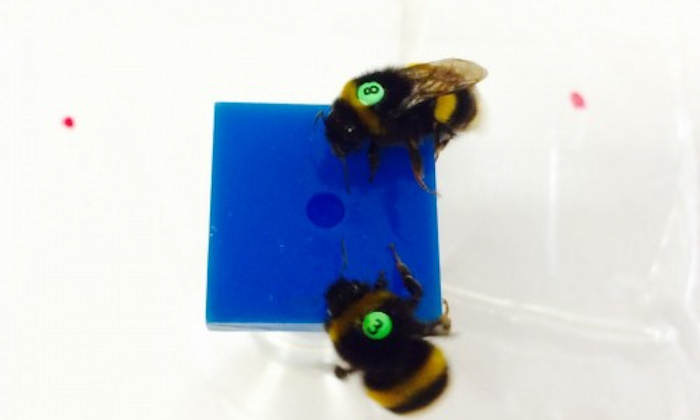Research reveals what turns bumblebees into copycats
21 Jun 2016
Clever bees would rather ‘queue up’ in an uncertain world

New research on the bumblebee by a University biologist has thrown light on the biology of why animals decide to copy each other, confirming its status as one of nature’s cleverer insects.
In a paper published in the journal Biology Letters, Marco Smolla finds that bees will only copy the flower choice of others when nectar is hard to find.
If nectar can be more easily found, bees will rely on their own abilities, taking their cues from the shape, colour and odour of flowers.
PhD researcher Marco said: “I was surprised to see that the small brain of a bumblebee is capable of copying other individual’s flower choice, depending on the complexity of their environment.
“One intriguing aspect of copying is that it can be found across the animal kingdom from humans to bees, and it is fundamental to cultural evolution.
“Biologists have long been trying to understand when, how and why we copy information provided by others.”
He added: “We find that bees copy each other more often in unpredictable worlds, using a strategy described as ‘copy-when-uncertain’.
“Based on the results of computer simulations we developed, we predicted this behaviour and the lab work confirmed it – so we are very pleased with the results.”
For the research, funded by a Royal Society grant, the clever insects learnt to find nectar contained in artificial flowers.
Using bumblebee dummies, Marco mimicked social information and resource depletion by associating every other dummy with a nectar reward on the flower.
The bees were then trained either to a world where only two flowers contained a lot of nectar, or where all flowers contained a little bit of nectar.
Bees trained in the world where nectar was harder to locate, preferentially landed on flowers with ‘dummy bees’, despite the prospect of having to ‘queue’.
In contrast, bees from the world where all flowers are rewarding the bees did not show a preference.
In an additional experiment, the researchers exchanged the bumblebee dummies with pieces of craft foam. Although the bees learned to reliably use this cue in the training phase, they showed no preference in the test.
“This shows that bees not only use information selectively, but also distinguish between social and non-social cues,” he added.
